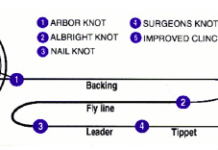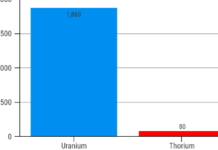by Shane Box and Joshua French; Farnsley Middle School (Louisville, KY)
There have been many stories, books, and movies about time travel. In reality, time travel has not yet been achieved. Ronald Mallett is researching several methods for time travel. He wants to build a time travel device and test it in the next 10 years, and “twist” time in order to go into the past. Mallett is a professional theoretical physicist from the University of Connecticut

What made Mallett get interested in time travel is simple. At a young age, his Dad died of a heart attack because of smoking. He read H. G. Well’s The Time Machine, and wanted to go back in time to warn his Dad about the dangers of smoking.
Mallett is currently trying to use gravity to create a loop in time. To do this, he is working with an experimental physicist to try and prove that a circulating light beam to create a loop, which could allow the possibility of time travel.
To determine if the time loop exists, Mallett is designing a desktop sized device that will test his theory. By arranging mirrors, he can make a circulating light beam, which should warp surrounding space. Mallett hopes that he will observe subatomic particles, which have extremely short life times, to exist for a longer time than expected when placed in the surrounding area of the circulating light beam. So, a longer lifetime means that the particles must have flowed through a time loop into the future and if the particles live longer then they would have went through the process of time travel. Circulating light beams can be created using gamma radiation and magnetic fields to warp time.
Mallett simplified the science behind time travel in an email. “Say you have a cup of coffee and a spoon,” Mallett explains, “The coffee is empty space, and the spoon is the circulating light beam. When you stir the coffee with the spoon, the coffee, or the empty space, gets twisted. Suppose you drop a sugar cube in the coffee. If empty space were twisting, you’d be able to detect it by observing a subatomic particle moving around in space.” In this analogy, sugar represents the subatomic particles, which would be affected by the twisting.
In an email to Scijourner, Mallett explained that his work is based on two theories Special (1905) and General (1915) Theories of relativity, developed by Albert Einstein. Mallett says that the Special Theory of Relativity can allow you to travel in the future. General Theory of Relativity can allow you to travel in the past. According to Einstein, whenever you do something to space, you also affect time. Twisting space causes time to be twisted, meaning you could theoretically walk through time as you walk through space, says Mallett.
Special Theory of Relativity says that time for moving clocks can slow down. This means that the faster a clock moves, the more time slows down. Mallett states, “For example, your heart rate is a clock. According to Einstein’s Special Theory of Relativity, the faster you move, your heart rate will slow down. So, if you were traveling fast enough, you would age less than most people. This would allow you into the future younger then everyone else. But, using this method, you couldn’t travel into the past. In this theory, “A clock is any mechanism that has a heartbeat.”
Mallett thought about an alternative to these time travel methods based on Einstein’s famous relativity equation: E=mc2. In this equation, Einstein showed that mass and energy are different forms of the same thing. “Einstein’s equation shows that mass and energy are equivalent—so long as you multiply by the “conversion factor” of c2 (the speed of light multiplied by itself). This factor is huge: 90 billion kilometers2 per second2. So if you multiply a small amount of mass—say, the mass of a penny—by c2, you’ll get a tremendous amount of energy.” If a penny could be converted entirely to energy, it would provide enough energy to power the New York City metropolitan area for at least two years, according to the American Museum of Natural History.
Einstein also showed that time is affected by motion, and his theories have been demonstrated by comparing time on an atomic clock that has traveled around Earth on a jet. It’s slower than a clock on Earth.
“Although the jet-flying clock regained its normal pace when it landed, it never caught up with earth clocks, which mean that we have a time traveler from the past among us already, even though it thinks it’s in the future,” Mallett says.
General Theory of Relativity states that gravity can effect time. So, the stronger the gravity, the more time can slow down. “So that a clock at the surface of the earth where gravity is strong will be running at a slower rate than a clock at a higher altitude that is further from the surface of the earth, for example, at the top of a mountain.
According to Mallett, “Black holes, wormholes (a shortcut through space from one location to another) and cosmic strings—each of these phenomena has been proposed as a method for time travel, but none seem that feasible, for at least one major reason. Although theoretically they could distort space time, they all require an unthinkably gigantic amount of mass.”
Shane Box and Joshua French

This work is licensed under a Creative Commons Attribution-NonCommercial-NoDerivs 3.0 Unported License














THIS IS SO COOL! Most interesting thing I’ve ever read!!!!:smile:good
I was SUPER fascinated with this topic, thank you for the insight Shane and Joshua.:gamba
This is a great article, and it was really fascinating! One thing i would write more about is focusing more in whether time travel is possible, but that’s it!